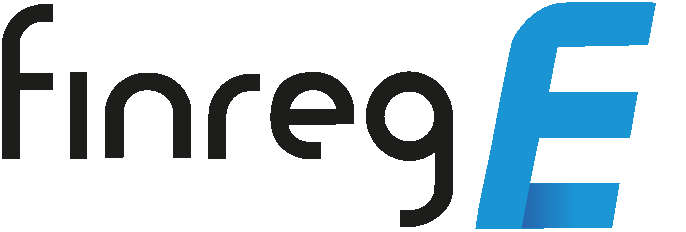In today’s highly regulated financial sector, institutions are increasingly challenged to manage and map the intricate relationships between external regulatory requirements and internal risks, policies, and controls. This work becomes significantly more difficult when dealing with massive amounts of unstructured data, such as regulation texts that must be precisely linked with an organization’s compliance documentation. Proper management of this interconnection is critical for ensuring compliance, minimising risks, and meeting the growing global expectations of regulators and senior management accountability regimes.
Challenges of Mapping Unstructured Regulatory Data
Compliance teams have considerable challenges when dealing with regulatory data, which is often unstructured and vast. Financial institutions have to deal with complex legal documents that are always evolving, with different regulations influencing various areas of an organization’s operations. Manual regulatory mapping is time-consuming and error-prone due to the sheer volume and complexity of the data. Furthermore, the unstructured form of this data hampers its connection to corporate compliance frameworks such as risk registers, regulations, and controls.
Organizations must also contend with cross-jurisdictional compliance, where regulations from multiple jurisdictions must be mapped against a company’s internal policies and controls. Senior management accountability regimes, such as the UK’s Senior Managers and Certification Regime (SMCR), Australia’s Banking Executive Accountability Regime (BEAR), and other global accountability frameworks, place further pressure on executives to ensure that systems and controls are adequate, monitored, and clearly aligned with regulatory requirements.
Benefits of Effective Regulatory Rule Mapping
Accurately mapping regulations to internal frameworks such as risks, policies, and controls is crucial for several reasons:
Enhanced Risk Management: Connecting regulatory rules to internal risk frameworks allows organizations to proactively manage potential compliance risks. This results in a better understanding of how external regulations influence internal processes, helping to mitigate compliance gaps.
Increased Accountability: Regulatory expectations require senior management to ensure that their organizations have robust systems in place to monitor compliance. Rule mapping allows executives to demonstrate that they are managing regulatory risks effectively, reducing personal and organizational exposure to penalties.
Streamlined Auditing and Reporting: With proper regulatory rule mapping, organizations can easily prepare for regulatory audits and demonstrate compliance, making it simpler to produce accurate reports and audit trails.
Operational Efficiency: Automation tools that facilitate regulatory mapping reduce the manual workload for compliance teams, allowing them to focus on strategic initiatives rather than labour-intensive tasks.
Achieving Regulatory Rule Mapping
Achieving efficient and accurate regulatory rule mapping requires a technological solution capable of processing large volumes of unstructured data and transforming it into actionable insights. FinregE’s Regulatory Rule Mapping solution offers a revolutionary approach to bridging regulatory requirements with internal compliance frameworks. Powered by its Regulatory Insights Generator (RIG), FinregE automates the alignment of regulatory rules with an organization’s policies, procedures, and controls.
At the core of FinregE’s solution is the ability to convert complex, text-heavy regulations into machine-readable metadata that can be mapped to internal frameworks in real-time. This automation allows organizations to maintain up-to-date compliance with evolving regulatory requirements across multiple jurisdictions. Key features of FinregE’s rule mapping technology include:
Obligation Extraction: FinregE’s AI-powered system extracts actionable obligations from regulatory texts, streamlining the process of aligning regulations with internal compliance frameworks.
Gap Detection and Remediation: The system identifies discrepancies between current controls and regulatory obligations, enabling proactive gap remediation and reducing the risk of non-compliance.
Real-Time Regulatory Alignment: By automatically mapping new and evolving regulations to internal policies and controls, FinregE helps organizations stay compliant with both current and future regulatory requirements.
The Role of Machine-Readable Digital Rule Libraries
FinregE further enhances the efficiency of regulatory compliance with its Digital, Machine-Readable Regulation Libraries. These libraries provide centralized access to structured regulatory content that is easily searchable, categorized, and analysed. By organizing regulations into a standardized, machine-readable format, FinregE allows users to seamlessly connect regulatory texts to their internal compliance frameworks, reducing the complexity of navigating diverse regulatory landscapes.
Some key benefits of FinregE’s Digital Rule Libraries include:
Customizable Regulation Libraries: FinregE works with organizations to build bespoke libraries tailored to their regulatory footprint, allowing users to track and manage regulations relevant to their specific operations across jurisdictions.
Advanced Search Capabilities: The platform’s advanced search tools, including network visualizations, help users uncover complex regulatory relationships, facilitating easier interpretation and application of regulations.
Linked Data and Version Control: FinregE links regulations to related laws and external resources, while version control features enable users to track changes over time, ensuring that compliance strategies remain current and aligned with legal requirements.
By integrating its digital regulation libraries with internal governance, risk, and compliance systems, FinregE supports a cohesive approach to regulatory management. APIs and real-time notifications keep organizations informed of changes to regulatory obligations, ensuring proactive compliance.
Conclusion
In today’s fast-evolving regulatory environment, managing the interconnectedness of regulations to internal risks, policies, and controls is a critical function that requires advanced tools and strategies. FinregE’s Regulatory Rule Mapping and Machine-Readable Digital Libraries provide financial institutions with the technology needed to automate and streamline compliance processes. By transforming regulatory texts into structured, machine-readable data, FinregE enables institutions to enhance risk management, maintain accountability, and efficiently meet regulatory expectations. Through this proactive approach, organizations can mitigate compliance risks, reduce costs, and stay ahead in an increasingly complex regulatory landscape. Book a demo today.




